Summary:
Shredding efficiency is essential for businesses to remain competitive, and the selection of the right blade for shredder machines plays a pivotal role. In this article, we explore how blade choice directly impacts shredding performance, energy consumption, maintenance costs, and overall productivity. By understanding key factors in blade selection, businesses can optimize their shredding processes and achieve better results.
Introduction
When it comes to industrial shredding, efficiency is key. Whether you’re working with paper, plastic, metal, wood, or any other material, choosing the right blade for shredder is critical. The performance of your shredder depends not only on the motor and design of the machine but also significantly on the quality and suitability of the shredder blade.
In this article, we’ll break down why shredder blade selection is so important and explore the ways you can maximize your shredding efficiency by making informed decisions. From the impact of blade materials to how proper maintenance can save you both time and money, let’s dive into the essentials of optimizing shredder performance through blade selection.
Why Shredding Efficiency Matters
Shredding efficiency isn’t just about speed; it also affects the quality and cost-effectiveness of operations. If your shredder is not performing at its best, it can lead to unnecessary downtime, increased energy consumption, and reduced output quality. Whether your business deals with waste management, recycling, or manufacturing, ensuring your shredder runs efficiently is essential to maintaining profitability and reducing operational costs.
Increased efficiency leads to:
- Reduced downtime: Efficient shredding means fewer interruptions and less time spent on maintenance or blade replacement.
- Lower energy consumption: Properly functioning blades can help optimize the shredder’s energy use, leading to cost savings.
- Better quality output: A sharp, durable blade ensures consistent shredding quality and prevents material clogging or irregular cuts.
Understanding these points emphasizes the importance of blade selection in achieving the best possible shredding results.
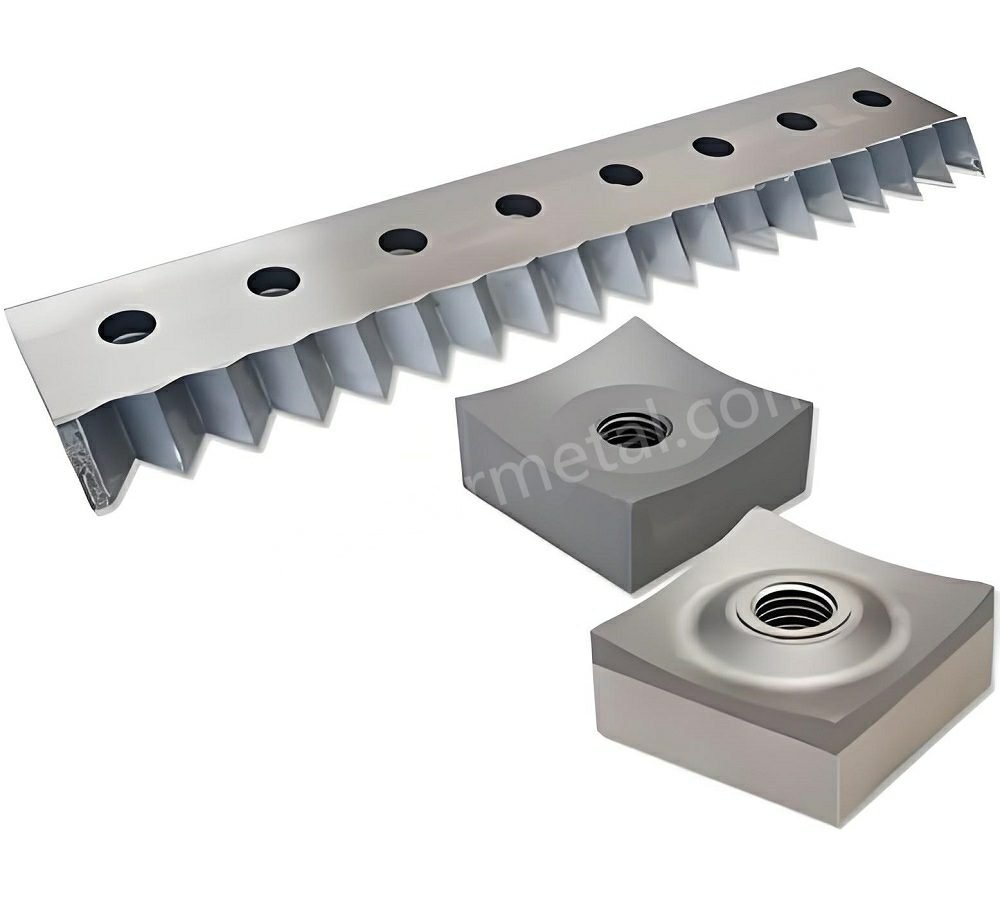
Understanding Blades For Shredder
A shredder blade is a cutting component that performs the critical function of breaking down materials. There are several types of blades, each designed for specific applications. Whether it’s single-shaft, double-shaft, or four-shaft shredders, each blade type has its role in improving shredding efficiency.
- Single-Shaft Shredder Blades: These are typically used for soft materials like paper or plastics. They provide an efficient, continuous cut.
- Double-Shaft Shredder Blades: Commonly used for tougher materials, they offer more power and versatility by working in a counter-rotating manner.
- Four-Shaft Shredders: Ideal for highly durable materials, four-shaft blades offer fine shredding and increased durability.
Choosing the right blade involves understanding the specific requirements of your operation, such as the type of materials you shred and the shredder machine’s capacity.
Key Factors Impacting Shredding Efficiency
There are several factors that directly influence the efficiency of your shredder, and blade selection is one of the most important. Let’s take a closer look at the factors that can affect shredding performance:
- Material Type: Soft materials like paper or textiles require different blades than harder materials such as metal or wood. Choosing a blade that matches the material type will lead to smoother operation and longer blade life.
- Blade Material: Blades made from alloy steel, high carbon steel, or carbide-tipped blades offer varying degrees of sharpness, durability, and performance. Choosing the right material based on your shredding needs will impact both the quality and cost-effectiveness of shredding operations.
- Blade Design: The design and configuration of the blade can also affect shredding. Multi-shaft blades are ideal for complex materials, while single-shaft blades work best for more uniform materials.
- Shredder Machine Capacity: Your shredder’s capacity dictates the type of blade you should use. A higher-capacity shredder requires stronger, more robust blades to withstand the increased workload.
By considering these key factors, businesses can ensure they are making the best decision when selecting a shredder blade.
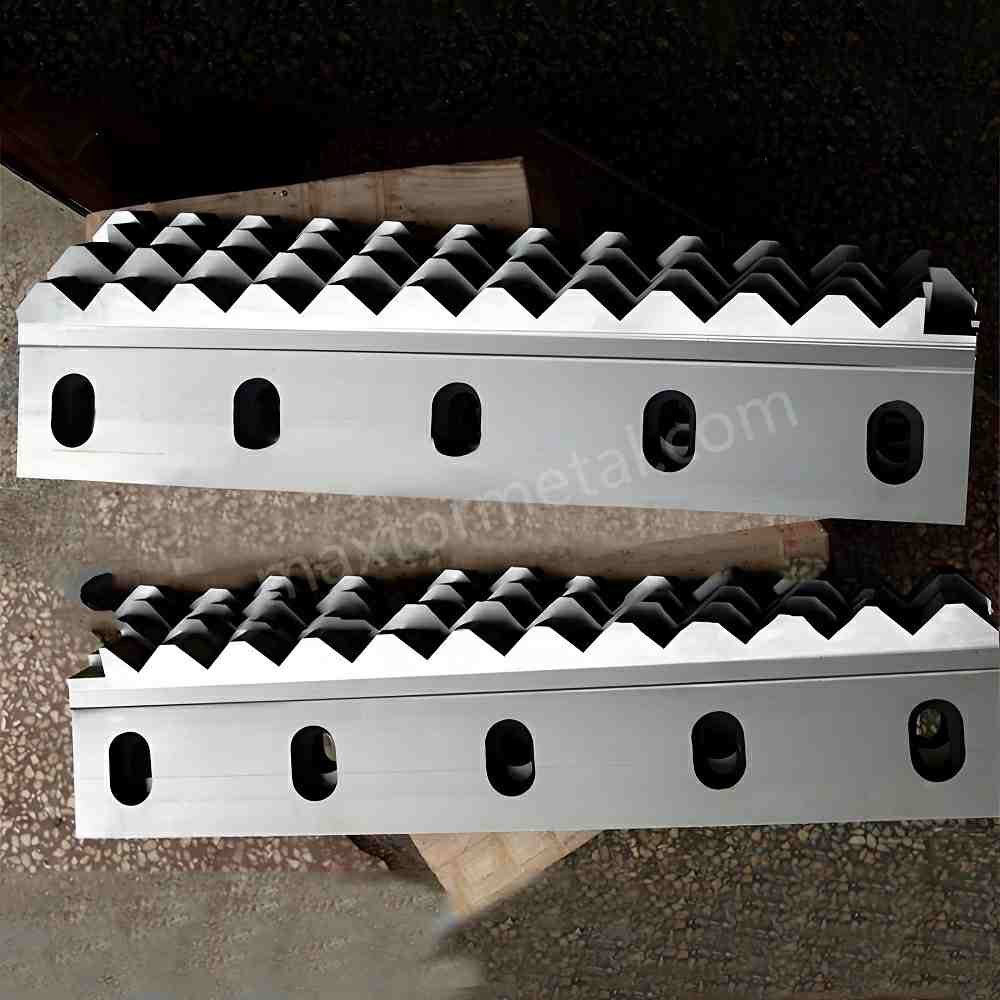
Blade for Shredder: A Crucial Choice
One of the most critical decisions in optimizing shredding performance is selecting the right blade for shredder machines. Not all blades are created equal, and using the wrong one can drastically reduce efficiency and even damage the shredder. The wrong blade choice can result in:
- Increased wear and tear: A mismatched blade may wear out faster, reducing its lifespan.
- Inefficient shredding: An incorrect blade may not handle the material efficiently, leading to blockages, lower output, and higher energy consumption.
- Frequent maintenance and replacements: Poor blade choice often results in more frequent maintenance, increasing downtime and operational costs.
Types of Shredder Blades and Their Applications
Choosing the right type of shredder blade depends on your shredding application. Here’s a breakdown of the most common types and their applications:
- Single-Shaft Blades: Best for simple tasks like paper or plastics shredding. They are ideal for materials that don’t require heavy-duty cutting.
- Double-Shaft Blades: These blades are ideal for medium to heavy-duty tasks. They are commonly used for shredding plastic, wood, or light metals.
- Four-Shaft Blades: These are used for shredding tough materials, such as rubber, thick plastic, or even industrial waste. They provide fine cuts and are built for high-performance, high-durability applications.
For industries dealing with a wide variety of materials, it’s essential to invest in the right type of shredder cutter to ensure your operation runs smoothly.
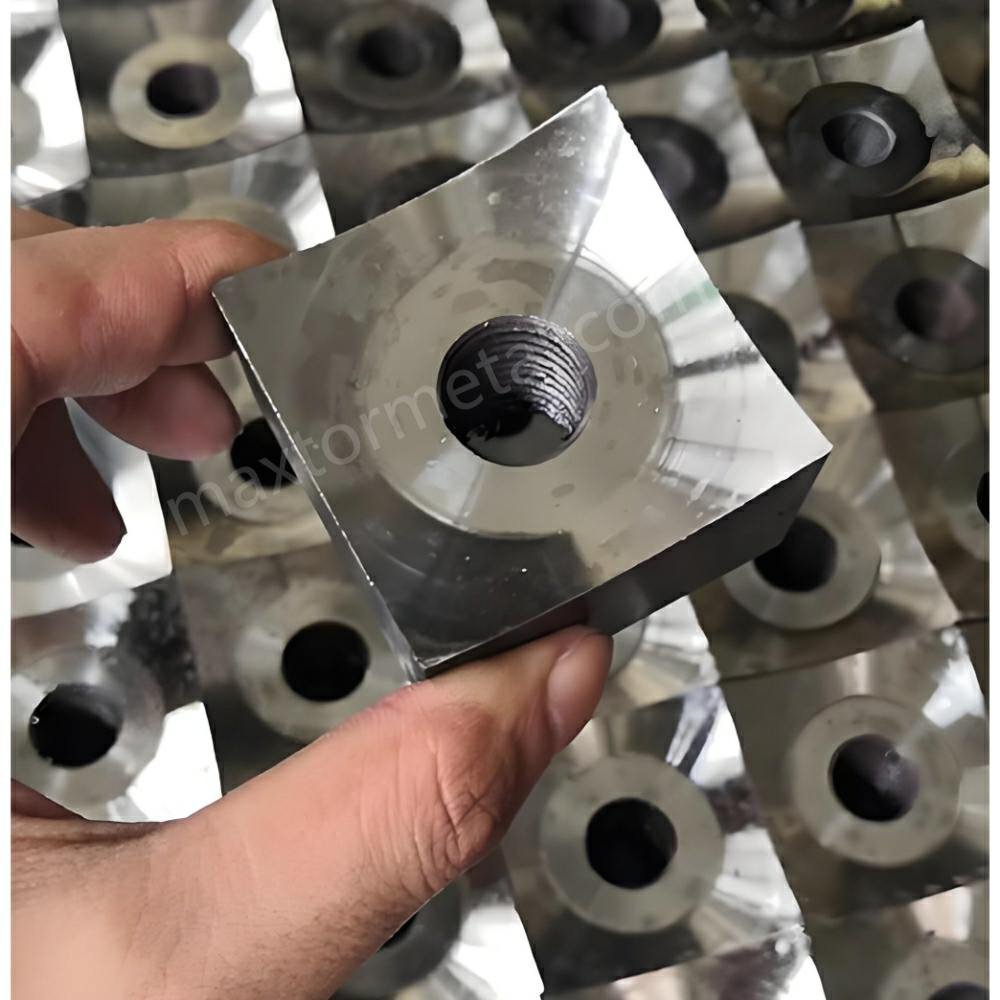
Material Considerations in Blade Design
The material used to manufacture shredder blades is just as important as the type of blade. Common materials include:
- High Carbon Steel: Known for its durability and strength, high-carbon steel is ideal for lighter shredding tasks, such as paper or plastic.
- Alloy Steel: This is used for more heavy-duty shredding needs and offers greater resistance to wear and corrosion.
- Carbide-Tipped Blades: For maximum durability, carbide-tipped blades are perfect for tough and abrasive materials. These are often used in industrial shredding operations that deal with materials like metal or rubber.
The material of the blade determines not only its sharpness but also its lifespan and maintenance requirements. Shredder knives made from higher-quality materials tend to last longer and perform better under extreme conditions.
Signs Your Shredder Blade Needs Replacement
Knowing when to replace your shredding blade is essential for maintaining efficiency. Here are a few signs to watch for:
- Decreased Shredding Performance: If you notice a significant drop in output, it could be a sign that your blade has worn down and needs sharpening or replacement.
- Excessive Vibration: Uneven or imbalanced blades can cause vibration, which may lead to further damage to the machine.
- Frequent Jams: If the shredder starts to jam more frequently, it’s often due to dull or damaged blades.
- Visible Damage: Chips, cracks, or blunt edges are clear indicators that the blade needs to be replaced.
Replacing blades before they cause damage to the shredder can prevent unnecessary repair costs and downtime.
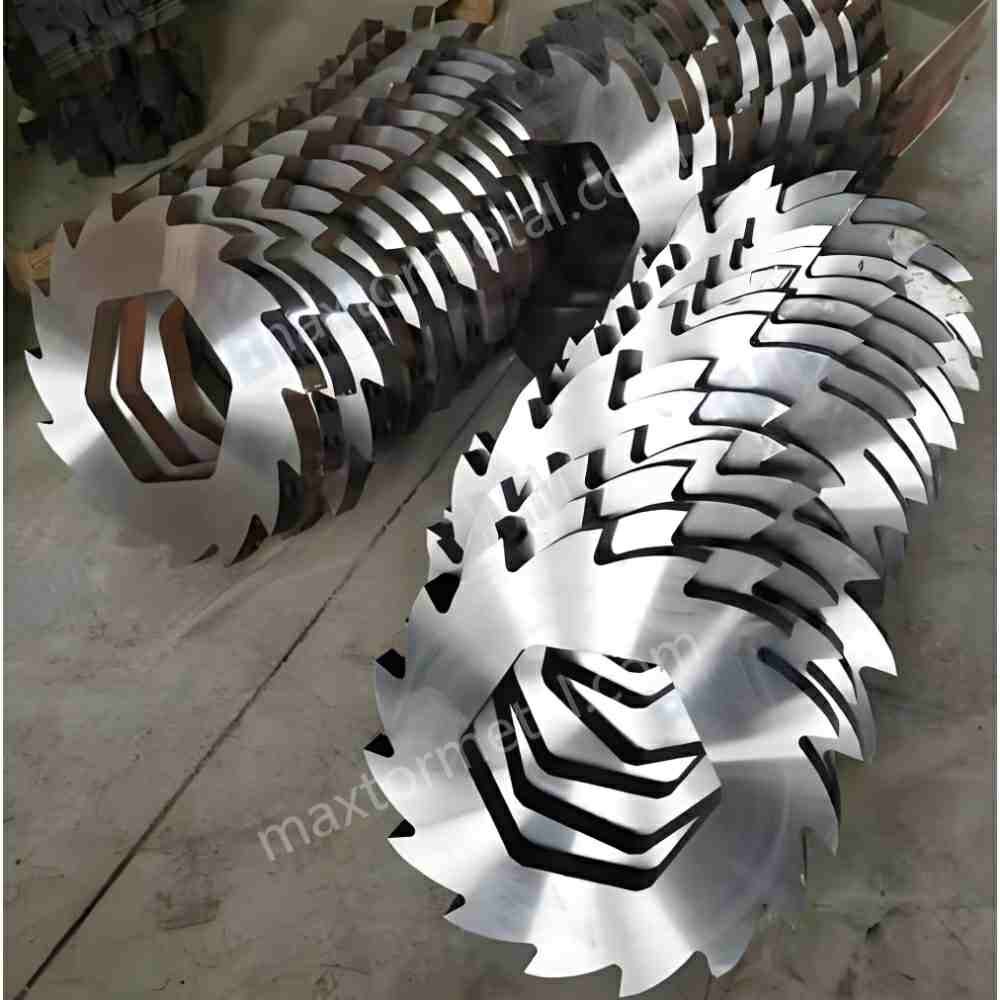
How to Select the Best Blade for Your Shredder
Choosing the best blade for shredder requires considering several factors. Here’s a step-by-step guide:
- Assess Your Shredding Needs: Determine what types of materials you shred and the shredder machine you use.
- Understand Blade Materials: Choose a blade material that suits your operational environment. For example, if you’re shredding tough materials like metal or rubber, a carbide-tipped blade may be the best choice.
- Consider Blade Size and Design: The size and configuration of the blade must match the requirements of your shredder.
- Consult with Experts: Work with a blade supplier who understands your industry and can recommend the best blades for your specific needs.
Making the right blade choice will enhance shredding efficiency and reduce long-term costs.
The Impact of Blade Quality on Energy Consumption
The quality of your shredder blade directly impacts your energy consumption. Sharp, well-maintained blades require less power to operate, reducing energy costs. On the other hand, dull or damaged blades increase the load on the motor, leading to higher energy consumption and potential machine wear.
Investing in high-quality blades can not only improve shredding efficiency but also reduce your company’s overall energy bills.
Maintenance Tips for Maximum Shredding Efficiency
Proper blade maintenance is crucial for ensuring that your shredder runs efficiently over time. Here are some key maintenance tips:
- Regular Sharpening: Keep blades sharp to avoid unnecessary strain on the machine.
- Cleaning: Keep blades free from debris to maintain cutting efficiency.
- Alignment: Ensure that blades are properly aligned to avoid uneven wear and reduce the risk of jams.
- Lubrication: Lubricate moving parts to reduce friction and prevent overheating.
Routine maintenance helps extend the life of your blades and ensures optimal shredding performance.
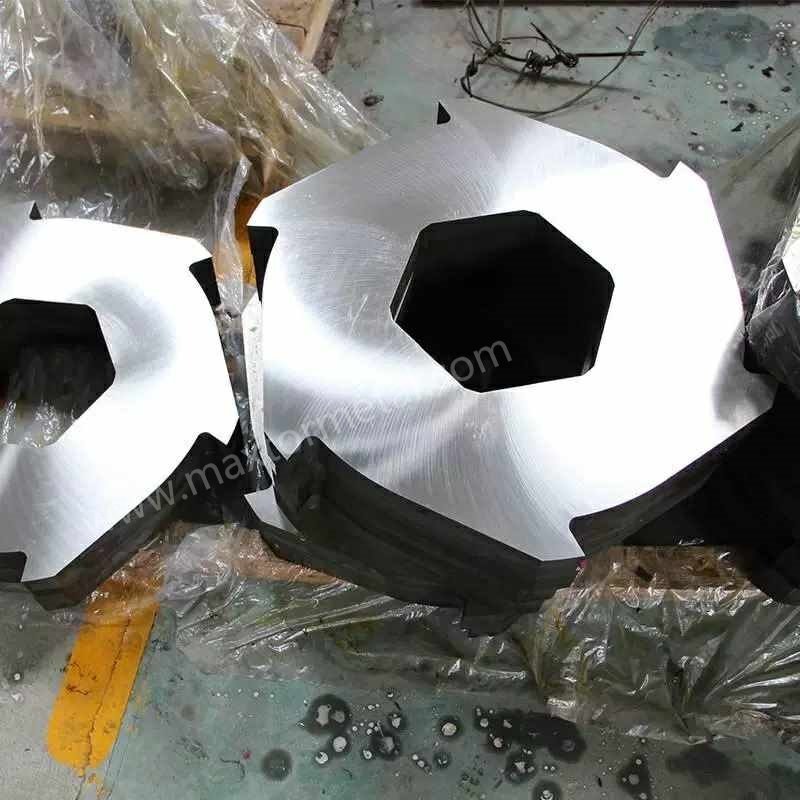
Common Mistakes to Avoid in Blade Selection
When selecting a shredder blade, there are a few common mistakes to avoid:
- Choosing Low-Quality Blades: Cheap blades may seem like a good deal upfront but will wear out quickly, leading to higher replacement costs.
- Using the Wrong Blade for the Material: Using the wrong type of blade for the material being shredded can lead to poor performance and equipment damage.
- Neglecting Maintenance: Failing to maintain blades properly can drastically reduce their lifespan and efficiency.
By avoiding these mistakes, you’ll ensure that your shredder operates at peak efficiency.
Real-World Case Study: Boosting Efficiency with High-Quality Blade For Shredder
A manufacturing company that switched to high-performance shredding blades saw a 20% increase in shredding efficiency, reducing operational costs and downtime. By opting for blades made from carbide-tipped alloy steel, the company reduced energy consumption by 15% and extended the lifespan of its shredder by over two years.
This real-world example shows how investing in quality blades can pay off in terms of both performance and savings.
The Cost-Benefit Analysis of Premium Blades
While premium shredder blades may come with a higher upfront cost, they offer significant long-term savings by reducing maintenance, downtime, and energy consumption. The return on investment (ROI) can be substantial, especially in industries where shredding is a critical part of operations.
A cost-benefit analysis should consider factors such as blade lifespan, energy savings, and the potential reduction in repair costs.
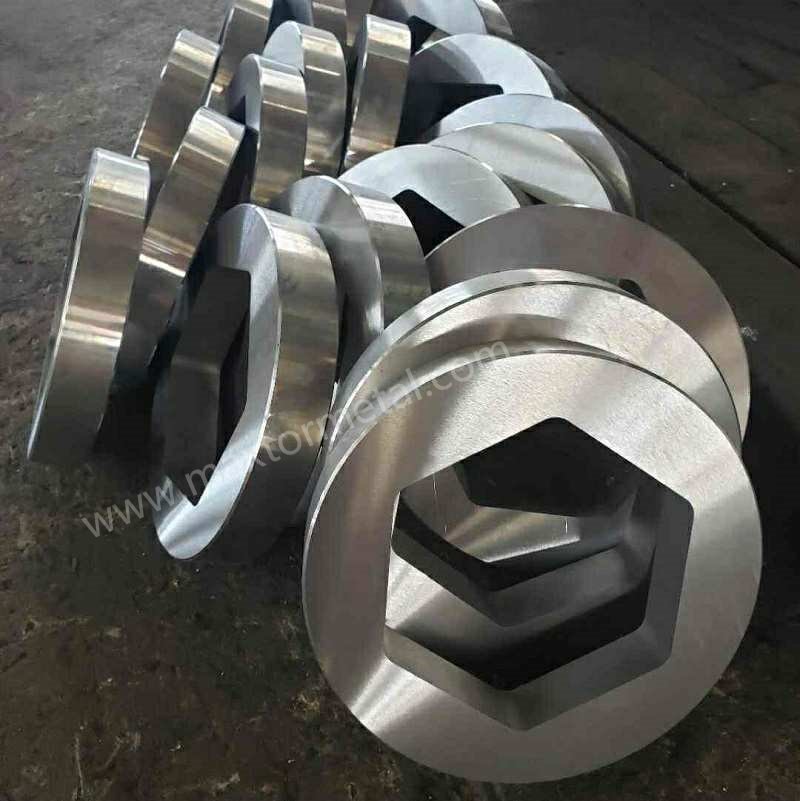
How Regular Blade Inspections Save Time and Money
Regular inspections of your shredder blades can save you both time and money. By catching issues early, you can avoid costly repairs, extend the lifespan of your equipment, and ensure that your shredding operation runs smoothly. Make blade inspections a part of your routine maintenance schedule to keep your shredder in top shape.
Eco-Friendly Shredding: The Role of Efficient Blades
Sustainability is increasingly important, and using efficient shredding blades plays a key role in eco-friendly shredding practices. Sharper, more durable blades require less energy to operate, reducing your carbon footprint. Additionally, high-quality blades produce cleaner, more consistent cuts, which can improve recycling processes and reduce waste.
Emerging Technologies in Blade For Shredder Design
Innovations in shredder blade technology, such as self-sharpening mechanisms and AI-driven blade performance monitoring, are set to revolutionize the industry. These advancements promise greater efficiency, less downtime, and reduced labor costs, making them a valuable investment for businesses looking to stay ahead of the competition.
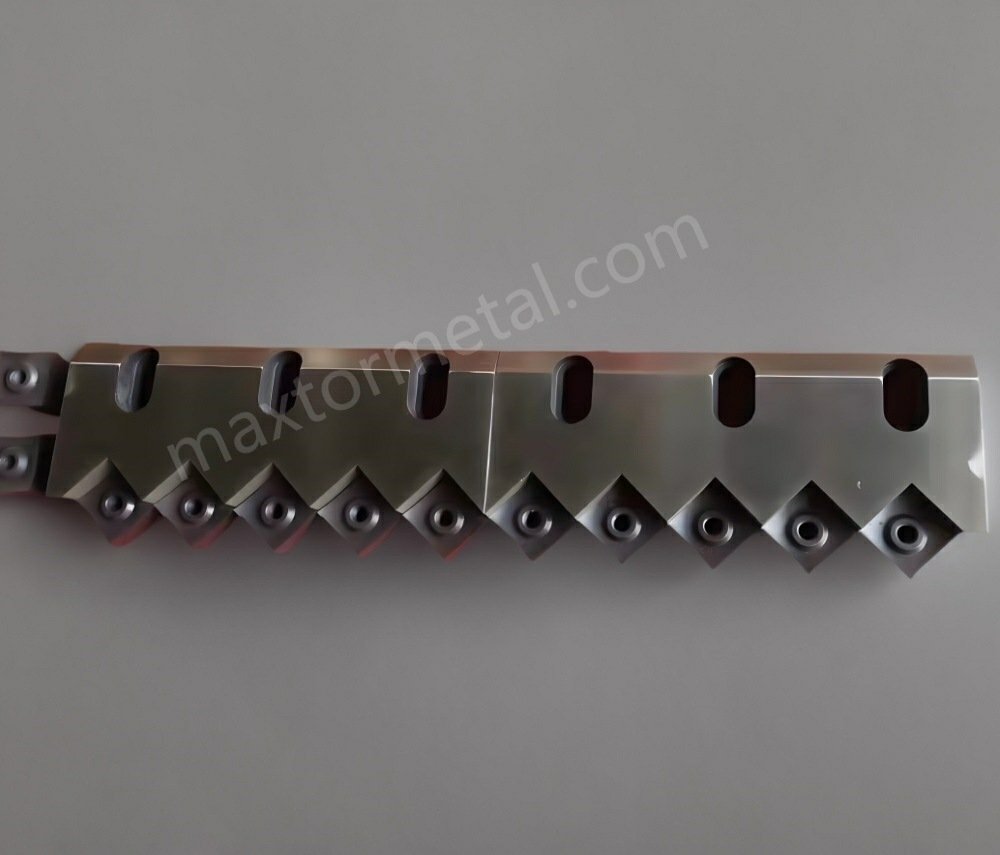
Why Partnering with a Trusted Blade Supplier is Essential
Choosing a trusted supplier for your shredder blades ensures that you get high-quality products and expert advice. Reputable suppliers can guide you in selecting the best blades for your needs and provide ongoing support, ensuring that your shredding operations remain efficient and cost-effective.
Conclusion
Optimizing shredding efficiency starts with selecting the right blade for shredder. By understanding the various blade types, materials, and maintenance practices, businesses can enhance productivity, reduce costs, and improve operational performance. If you’re looking for top-quality blades or need assistance in choosing the right product, don’t hesitate to reach out.
Learn More or Contact Us Today!



2 Responses